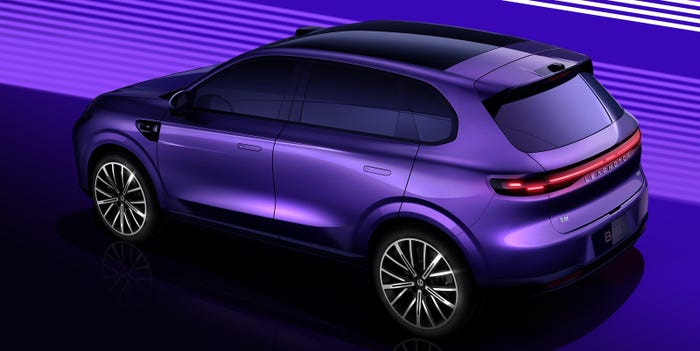U.S. Vehicle Population Grows Larger, Cars Grow Older, Scrappage Rate Falls
U.S. roads grew more congested in 2004 and the age of cars on the road increased to an all-time high as the scrappage rate fell.



Highly traveled U.S. roadways grew a little more congested in 2004, as the number of vehicles plying them continued to grow, and grow older.
Based on Federal Highway Admin. (FHWA) data there were a record 240,133,777 cars, trucks and buses registered to operate on Dec. 31, 2004, up 2.6% from the 239,695 vehicles tallied in 2003.
Add to that a record 6,004,687 motorcycles (up 7.7% from 2003’s 5,577,051) and there were 246,138,464 motorized vehicles vying for space on the nation’s roads in 2004, some 2.7% more than the previous year.
Related document: Vehicles in Operation in U.S. by Region
Although car registrations in 2004 were at a 10-year high of 139,908,083, the number of licensed trucks soared 5.4% to a record 101,430,420 from 96,201,860 in 2003, continuing an upward climb that has gone on unabated for more than 20 years.
Trucks also accounted for 41.2% of all motor vehicle registrations in 2004, up from 40.1% the previous year and the highest share in more than a half century, while cars fell to 56% from 57.2% in 2003. Motorcycles accounted for 2.4% of motor vehicles registered in 2004, slightly ahead of 2003’s 2.3%, while buses accounted for the remaining 0.4% each year.
Another SUV Record
Hardly surprising was the fact that SUVs, according to the FHWA’s definition that includes cross/utility vehicles, again constituted the fastest-growing segment of the light-truck market.
SUV registrations jumped 10.4% in 2004, to a record 31,914,137 units from the prior record of 28,902,207 a year earlier. In contrast, total van registrations rose 3.5% and pickups rose just 2.3%. The number of medium and heavy trucks on the road grew 5.7% in 2004, as more units were added to the fleet to meet the needs of the expanding economy.
On a regional basis, excluding buses and motorcycles, U.S. car and truck growth continued its westerly shift.
Although all but two regions of the country had more cars and trucks on the road in 2004 than in 2003, only the West South Central (Arkansas, Louisiana, Oklahoma and Texas) and the Mountain (Arizona, Colorado, Idaho, Montana, Nevada, New Mexico, Utah and Wyoming) regions put enough cars and trucks on the road in 2004 to increase their share of the U.S. total.
The number of cars and trucks registered in the Mountain states grew to 16,566,412 from 13,390,772 in 2003, enough to boost its share of the total fleet to 6.9% from 5.8%. The number of cars and trucks in operation in the WSC region rose to 25,607,737 in 2004 from 23,434,309 the prior year, giving it a 10.7% share of the U.S. market compared with 10.2% in 2003.
The two regions of the country where the car and truck population shrank were Mid-Atlantic (New Jersey, New York and Pennsylvania) and East North Central (Illinois, Indiana, Michigan, Ohio and Wisconsin).
There were 27,019,522 cars and trucks on the roads in the Mid-Atlantic states, down 0.4% from 27,117,008 in 2003, while registrations fell 0.6% the ENC region to 38,364,510 from 38,583,107.
Car Fleet Continued to Age
Meanwhile, cars continued losing ground to trucks in all but the Mountain region. There, the car share of total car/truck registrations edged up marginally to 48.6% from 48.5% in 2004, but stayed will below the 52.2% share posted in 2000.
At the same time, data from R.L. Polk Co. showed that the U.S. car fleet continued to age.
Based on data from Polk’s July 1 annual vehicle registration counts, the median age of cars on U.S. roads increased to nine years in 2005 from 8.9 years in 2004. It marked the 10th consecutive increase in the age of the car population.
Related document: U.S. Vehicle Median Age and Scrappage Rates, 2000-2005
On the other hand, the median age of trucks on the road in the Polk survey rose only slightly to 6.8 years in 2005 from 6.6 years in 2004. It was still well below the 7.7-year median posted in 1996.
Light trucks, alone, edged up to a median age of 6.6 years in 2005 from 6.4 years in 2004, but again remained well below 1996’ s 7.5 years.
The aging car population reflects not only the fact more consumers have switched to light trucks in recent years, but also that car scrappage continued fall.
According to Polk, only 4.3% of the total number of cars on the road were scrapped during the 12-month period ending July 1, 2005. That was a “historic low, last set in 1949,” Polk said.
The light-truck scrappage rate fell to 4.1% in 2005 from 4.7% in 2004 and 7.4% in 2000, Polk data show, while the scrappage rate for all vehicles fell to 4.3% in 2005 from 5.3% the prior year. The decline in the scrappage rate was attributed to improved quality that has extended the operational life of cars and trucks.
About the Author
You May Also Like





